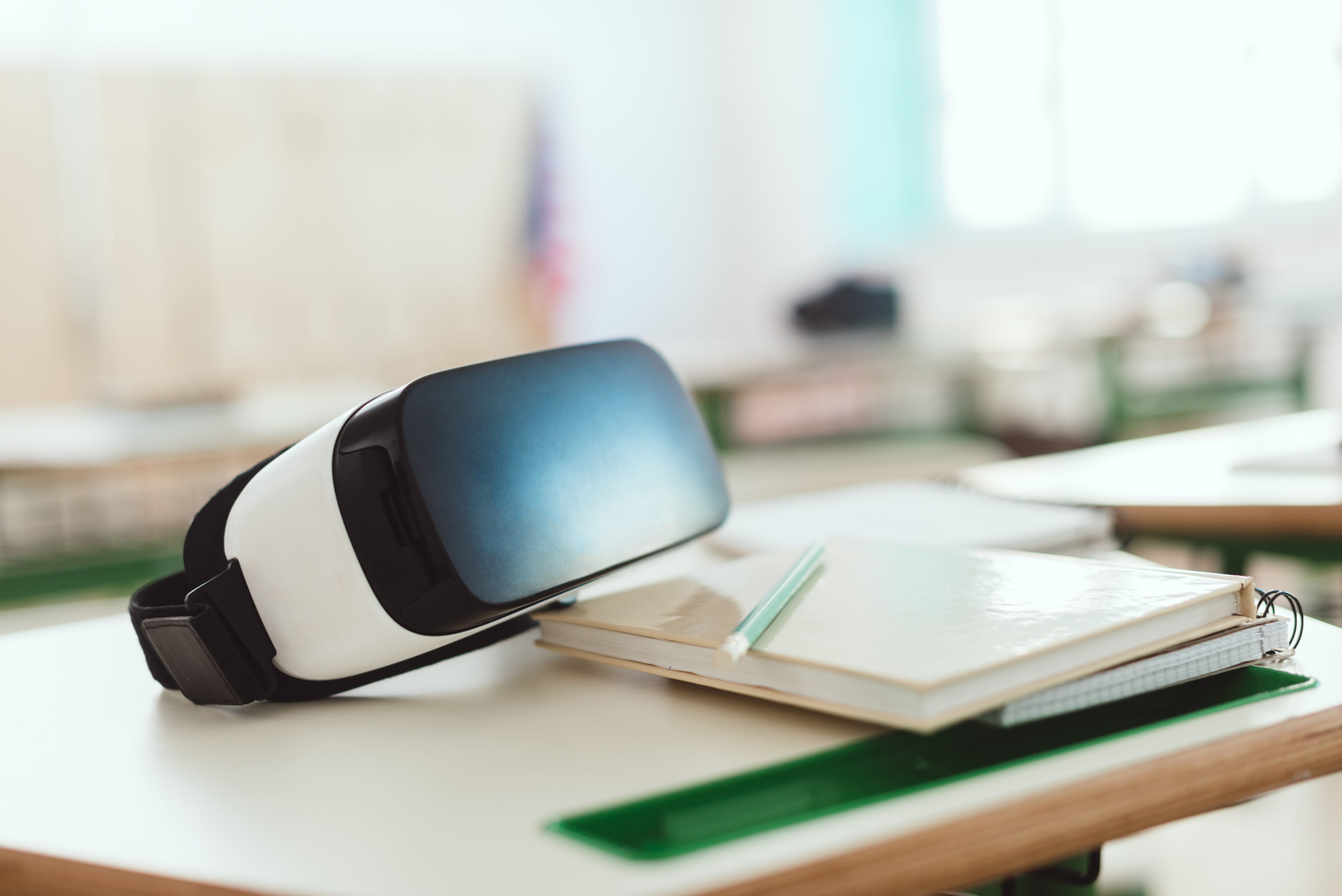
The advancement of virtual spaces, whether facilitated by personal computers or XR technology, has been instructive with regards to our collective approaches to design and how much material reality is reflected in those spaces.
Material versions of productive spaces such as schools and businesses would hardly integrate vestigial elements into their design. Upon doing a complete diagnostic of these same elements imported from the material world to the virtual, almost nothing that remains seems practical.
Before talking about educational spaces and the various virtual reality tools for education, let’s talk about an exception to the practicality gap that exists between material and digital objects: Real Estate Properties.
Searching for homes as a place to live or invest in can be time-consuming and impractical if the buyer is not currently in the vicinity. Therefore, having a virtual option on hand simplifies the process by giving them more confidence in their purchase before venturing there in person.
Making decisions for the virtual version is simple -- complete reproduction -- since the end goal is to get the buyer into the physical space and meet their expectations for it beforehand.
Also, while an existing property can be photographed in 360, a property under construction would be built using software with virtual/VR capabilities, the virtual space would still represent the finished product and, for the same reason, be filled with objects suggestive of a home or office.
With that in mind, why would we want virtual classrooms that look like their material counterparts?
We may begin with the example of a window, whose purpose for the classroom is primarily to provide ventilation and natural light. The virtual version of this scene serves neither of these needs, but they’re often built into the scene.
More troublingly, since nothing really exists outside that wall, an exterior also needs to be built to make it a more complete representation of a real classroom. As most people will conclude, these windows exist merely for the illusion of openness, making people ignore the fact that the same four walls/colliders are keeping them in that confined space.
Similar comments could be made about other elements such as stairs or ceilings as well.
In Peter Ludlow’s excellent paper ‘The Social Furniture of Virtual Worlds’ (2019), he discusses virtual chairs in some depth since there is no need to sit, or at least sit comfortably, in virtual spaces. He also takes inspiration from Chalmer (2017), who writes about the casual power of these digital objects to give social contexts to virtual behavior.
Within the educational context, desks serve the same lack of function as you can use neither to sit nor use it as a surface to take notes on.
It’s true that a sitting or standing position may offer a perspective more amenable to the classroom, but this may be solved by adjusting the viewer position up-and-down in settings regardless of the actual physical position of the user or the existence of digital furniture.
Features of spatial design for the teacher may include a stage, whiteboard, and podium; depending on the position of the students, a stage may provide a superior vantage point, an interactable whiteboard might be helpful for instruction, but a non-interactable board or a podium has no discernable purpose.
If these elements of a virtual classroom only serve to help find the best line of sight, why would they require the guise of desks and stages? More abstractly, the desks could be floating cubes arranged in a semi-circle around a larger cube which serves as the stage; or more fancifully, the desks could be replaced with toadstools in a mythic forest while the instructor teaches from atop the head of a giant tortoise.
So why settle for the overly familiar environments of a classroom when we could have something easier to develop or more interesting visually?
Recently, Sadler and Thrasher of the University of Illinois did a survey of real-world teachers by taking them to seven different Social VR spaces and asking which they deemed most suitable for teaching.
As a longtime virtual world practitioner, I was shocked and dismayed that they chose a less-functional/feature-light platform (not naming names but it would have been my last choice) simply because it was most easily recognized as a classroom environment.
On reflection, I understood their decision to be based on a sense of safety and satisfaction along with their ignorance on how they can use virtual reality tools for education. Especially their inability to take advantage of all the tools and VR apps due to the lack of formal instruction or training.
However, the comfort that comes from familiarity is short-lived since the mind tires of the sameness and seeks out other available possibilities. Likewise, ignorance is short-lived since a teacher will require features from the real-world class, and the limitations and possibilities of each VR app will quickly become apparent.
In conclusion, fidelity to the material version of a classroom is just a stepping stone to a more dynamic, functional, and visually interesting. As teachers learn how to use the many virtual reality tools for education in their instructions, it will expand the horizons of the instructional experience, and their students will follow them towards an education that is more accessible and designed specifically for them.
For more information about how we can bring VR to your school or institution, please contact us. Lance Powell is an experienced teacher trainer for virtual worlds, and you’re welcome to contact us for teacher training services as well.
Created By Euphoria XR | Privacy Policy | Sitemap| Contact Us